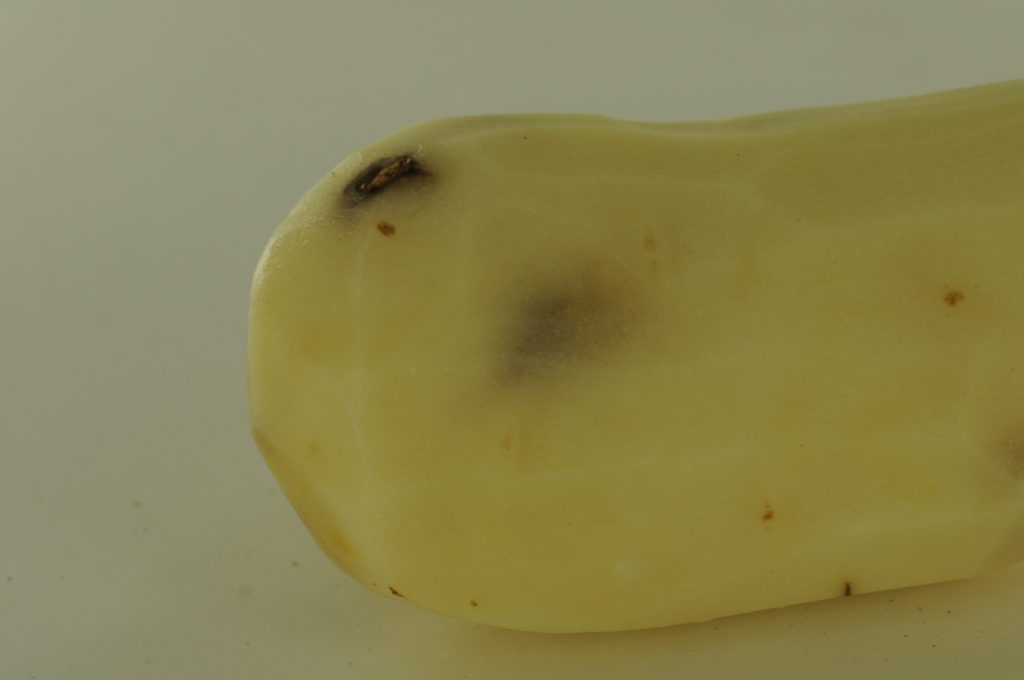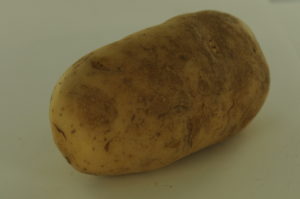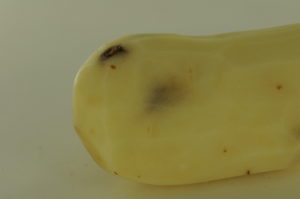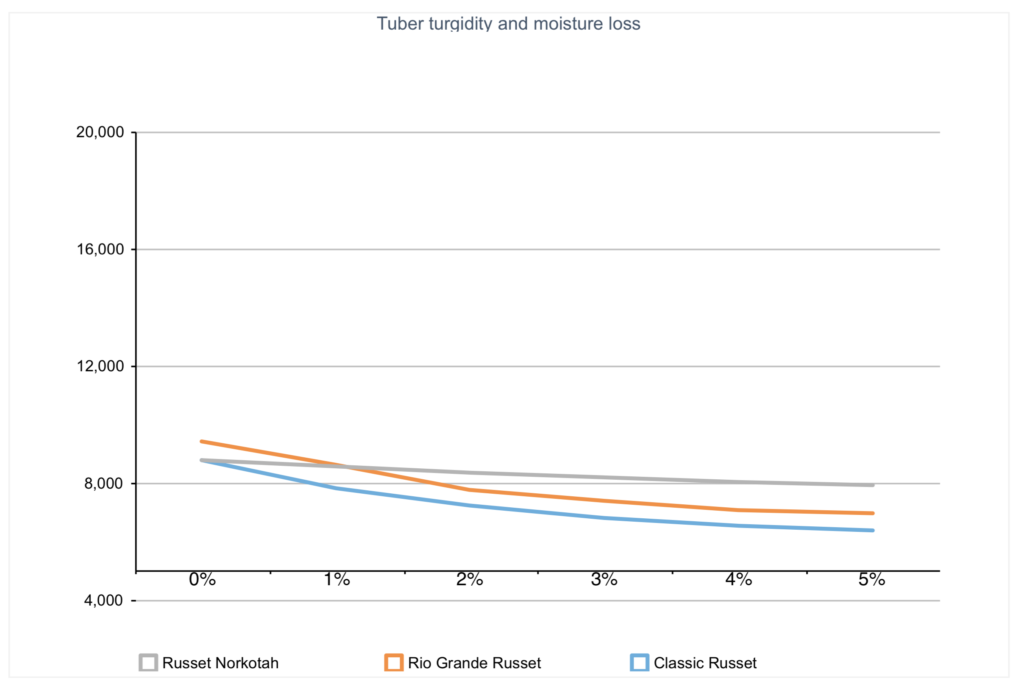
Minimizing early weight loss key in limiting potato pressure bruise
Pressure bruise is a major defect and source of economic losses in potatoes for all market classes.

In bulk storage, potato tubers are subjected to pile pressure that can damage and deform the potato, which over time could result in flattened or sunken areas. These flattened areas are considered to be a pressure bruise if there is a grey/black discoloration under the depression.
In some cases, there is no discoloration, and these symptoms are called pressure flattening. Discoloration symptoms take time (hours to days) to develop as the damaged area becomes exposed to oxygen. Pressure flattened and bruised tubers can be found throughout the pile depending upon why it occurred, but is often found between the vent pipes or next to the adjacent walls of the storage bin in the bottom 4 to 5 feet of the bulk storage. This is due to a greater force of weight (the pile of potatoes) on less hydrated potatoes.
The development of pressure flattening is a result of dehydration of the tubers. Loss of tuber hydration can happen before and after vine kill and prior to harvest if soils become too dry. Moisture loss from tubers can also occur during harvest and handling due to wounding, skinning, cuts and bruises — increasing exposed surface area for evaporation to occur.

In storage, tubers lose moisture due to a high vapor pressure deficit (function of temperature and humidity), wounded or poorly suberized potatoes, sprouting, improper ventilation and humidity and high respiration.
Measuring tuber texture with a texture analyzer can indicate turgidity of the tuber, cellular arrangement, skin toughness and the tubers’ overall ability to withstand force prior to deforming — potentially causing a pressure bruise.
Texture analysis of a tuber (y-axis) correlates to tuber moisture content (x-axis) and can indicate differences between cultivars (Figure 1 at bottom). Greater force is needed to deform tuber tissue correlated to a more hydrated tissue. Cultivars vary in the potential for moisture loss and susceptibility to pressure bruise.
Earlier research indicated that dehydrated tubers are more susceptible to pressure bruise in long-term storage. New research from Colorado State University shows that measuring tuber texture at harvest can identify potato fields that may have a greater risk for pressure bruise earlier in the storage season due to coming into the storage dehydrated. Using this type of tool, growers can identify which lots or fields that may need to be managed differently in storage or cannot be kept for long period of time in storage due to the potential for pressure bruise to form.
Measuring texture of potatoes at harvest to get an idea of tuber hydration and how the potato may respond to the storage environment and potential for pressure bruise is a good start to an integrated approach to minimize weight loss in storage.
Reducing the risk

Decreasing the potential for pressure bruise in storage is a complex matrix of actions that encompasses many considerations, such as status of the potato crop, pulp temperatures, weather, temperature set points, humidification and ventilation capacity, delta T and pile height. The majority of the weight loss often occurs in the first 30 days in storage, making early storage management the time to focus on minimizing weight loss and, therefore, pressure bruise.
Utilize the basic integrated principles of postharvest storage — airflow, humidity and temperature — to minimize weight loss. Remove field heat and tighten the

delta T to 0.5 to 2.0F as soon as possible with humidified cooling (or refrigerated) air and use air to equilibrate the pile to remove areas of varying temperatures and humidity. Remember, warmer air holds more water so varying temperatures within the pile also varies the relative humidity around the potatoes and contributes to tuber water loss or even potential condensation.
The more turgid — or more hydrated — a potato is, the greater the force required to deform it (pressure bruise) in storage. This means a hydrated potato can withstand the pressure of the pile more than a dehydrated potato. If you have known dehydrated potatoes from the field or a known storage that lack proper ventilation or humidification to minimize weight loss, then those potatoes can be earmarked for short term storage or decrease the pile height at loading.
Minimizing weight loss and pressure bruise is complex and can be achieved by an integrated approach in the field and storage. Knowing tuber turgidity before potatoes are put in storage can help plan and reduce losses due to pressure bruise. Not one action will minimize pressure bruise but integrating how hydrated the crop is at harvest and how to maintain that hydration in storage with air, temperature and humidity will decrease the potential for pressure bruise to occur.
— Sastry Jayanty is a postharvest physiologist at Colorado State University’s San Luis Valley Research Center. Nora Olsen is a professor and Extension potato specialist at the University of Idaho.

(This article was generously submitted to Spudman by the Potato Association of America. More articles from the PAA can be found here.)







